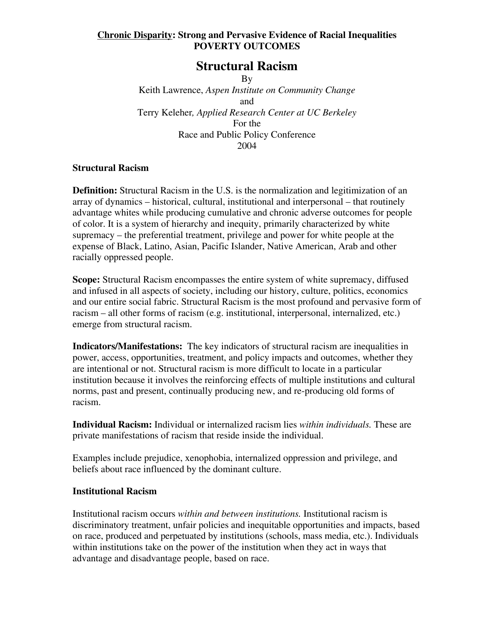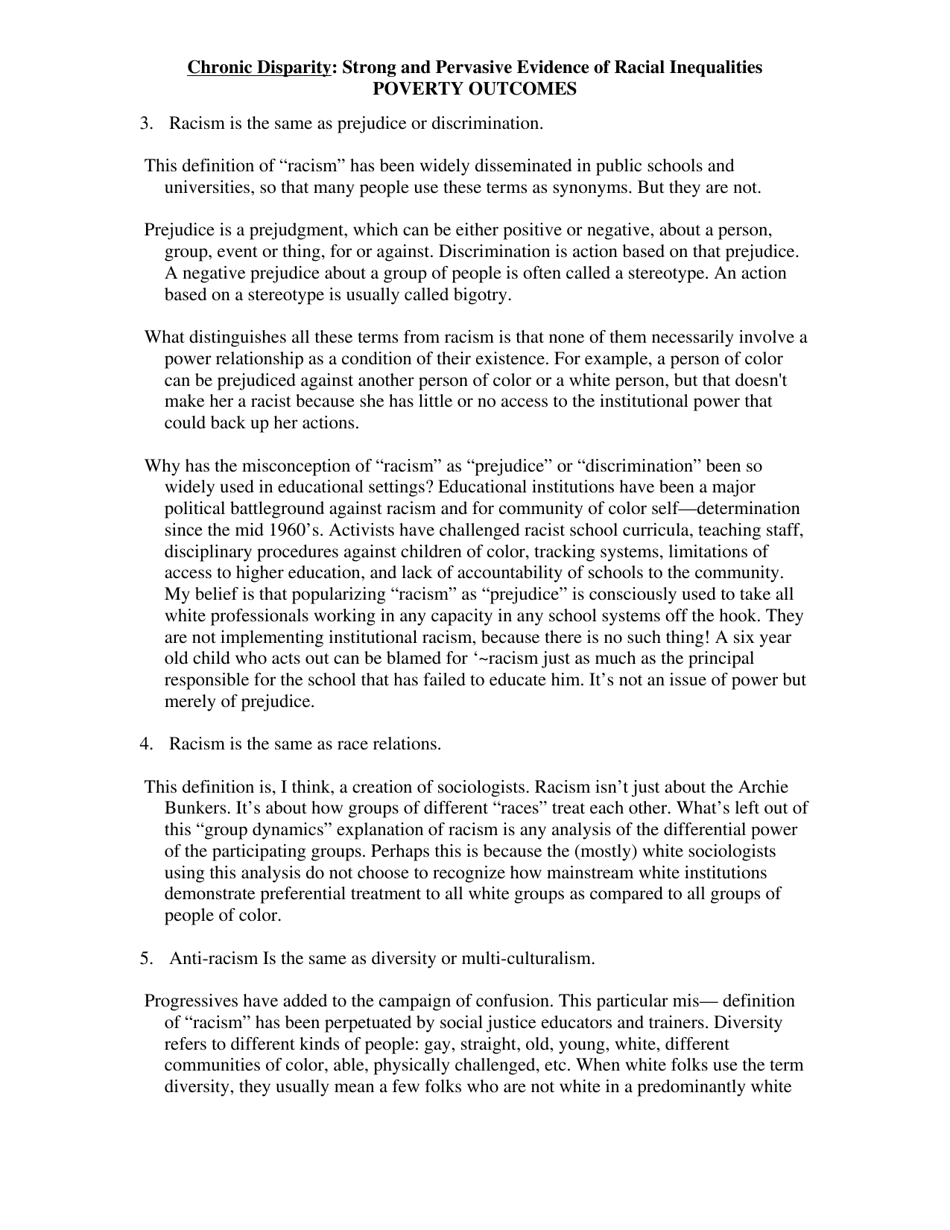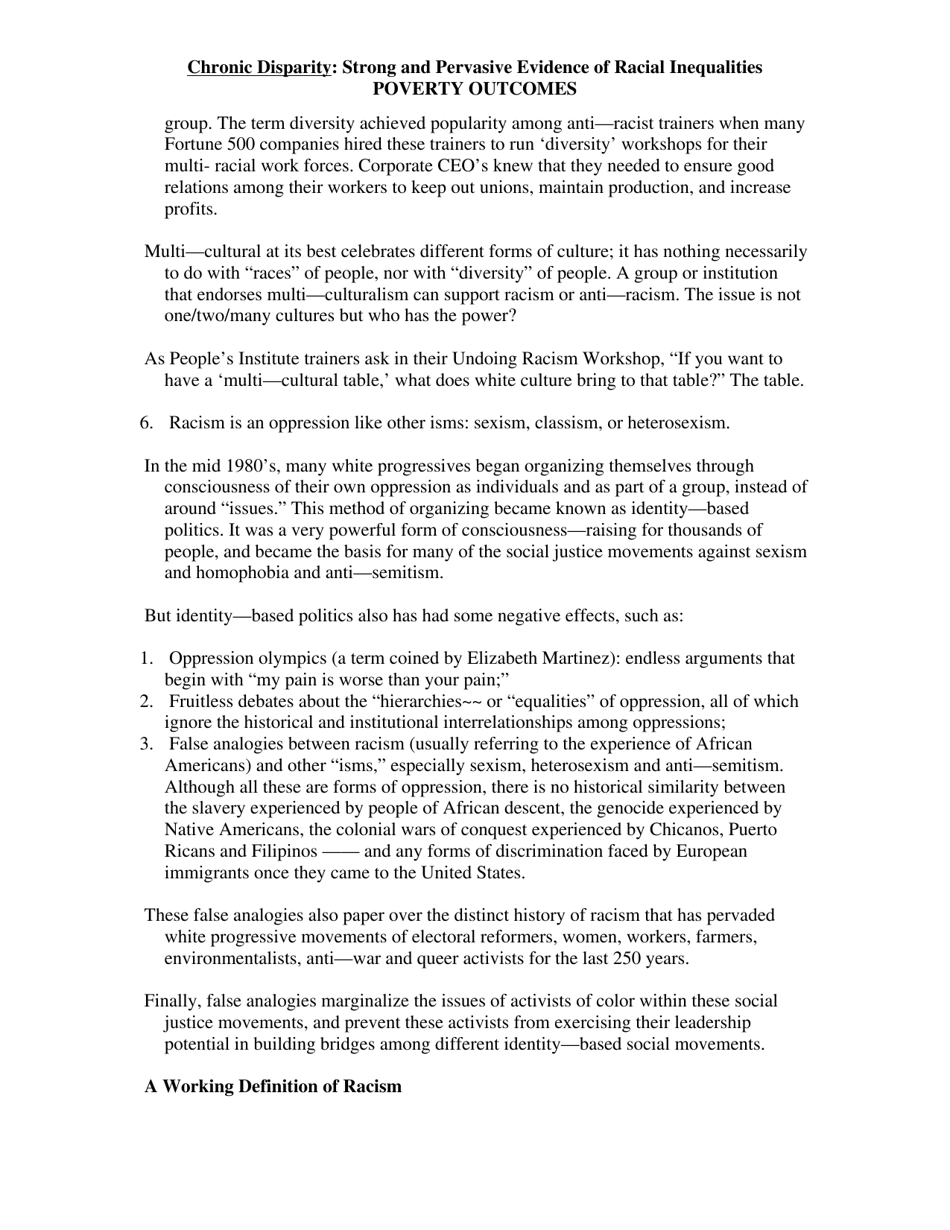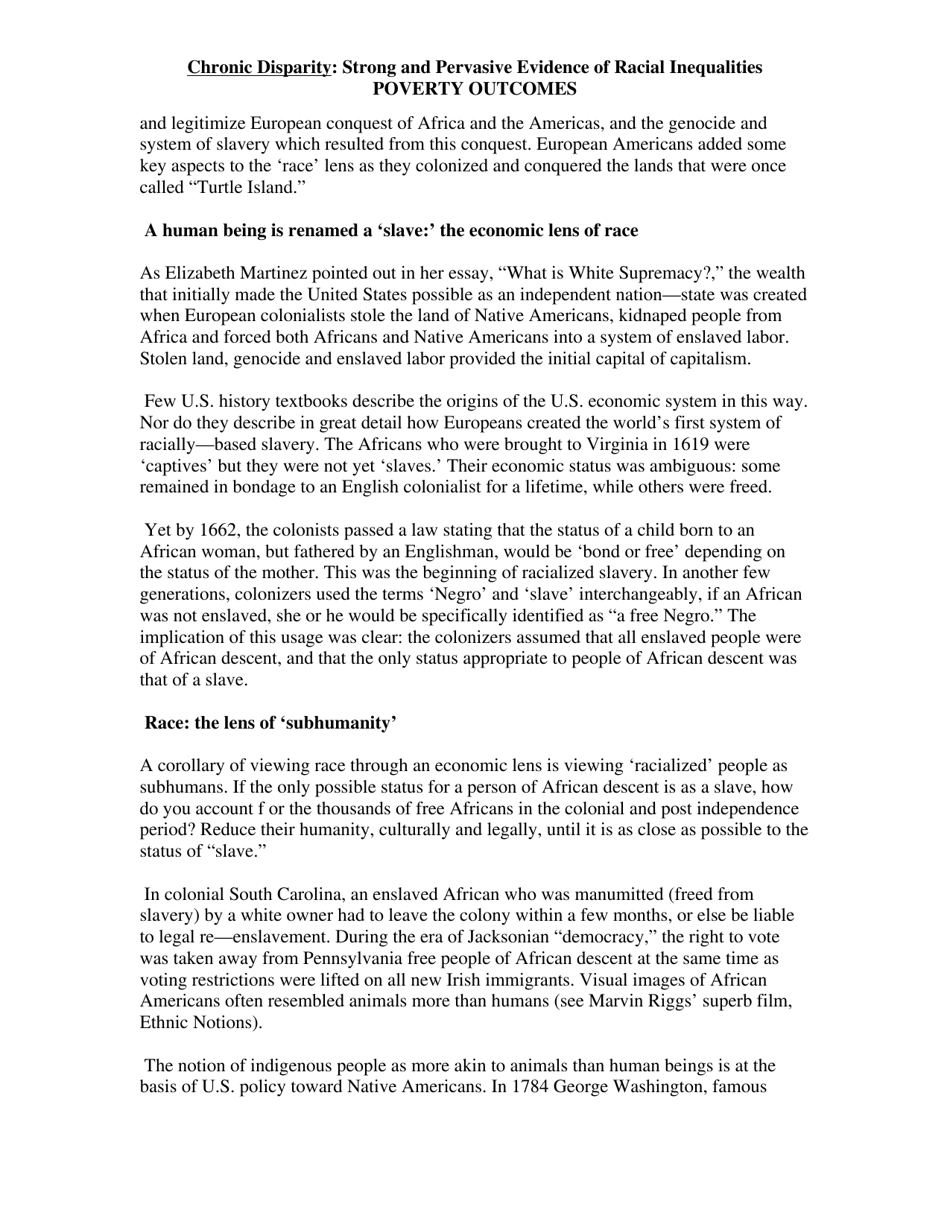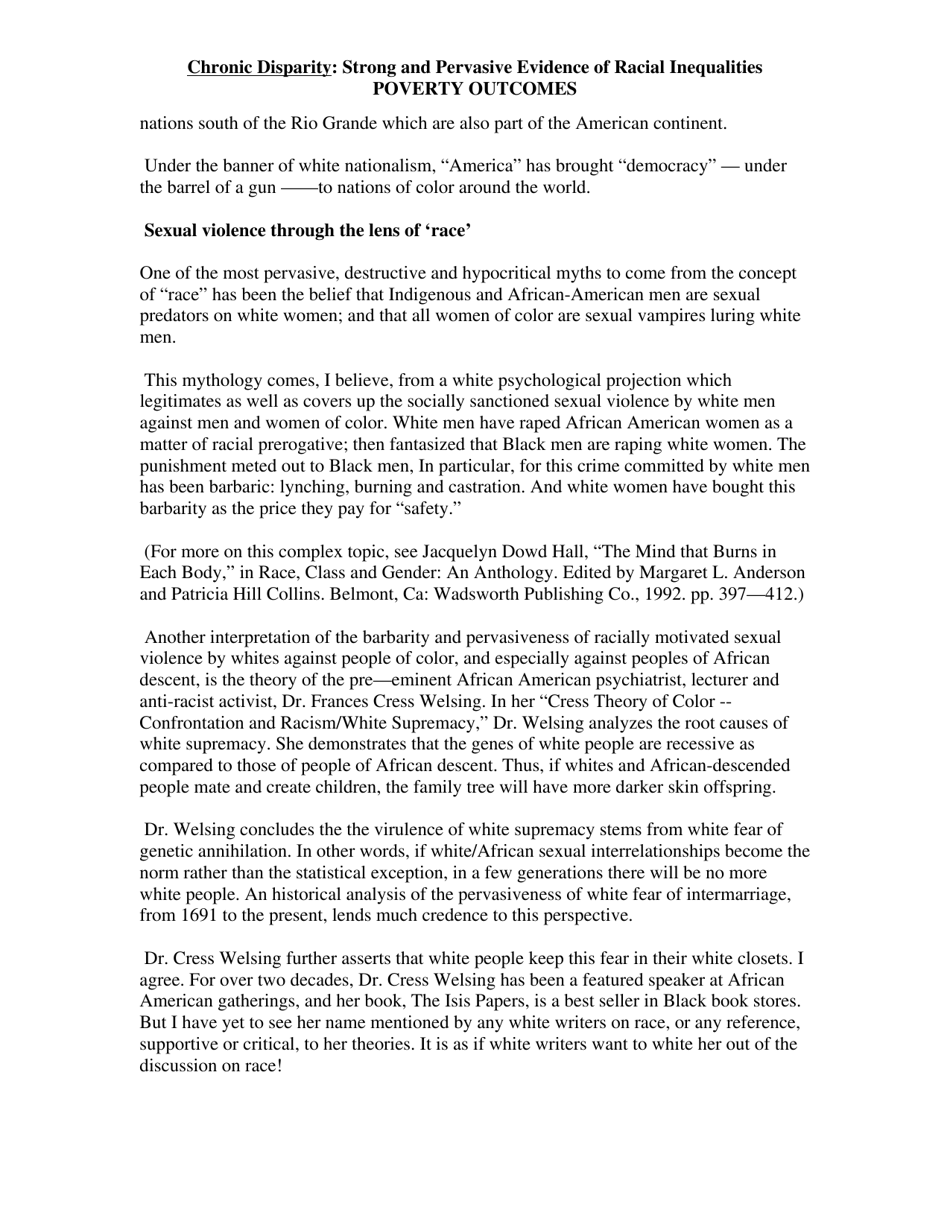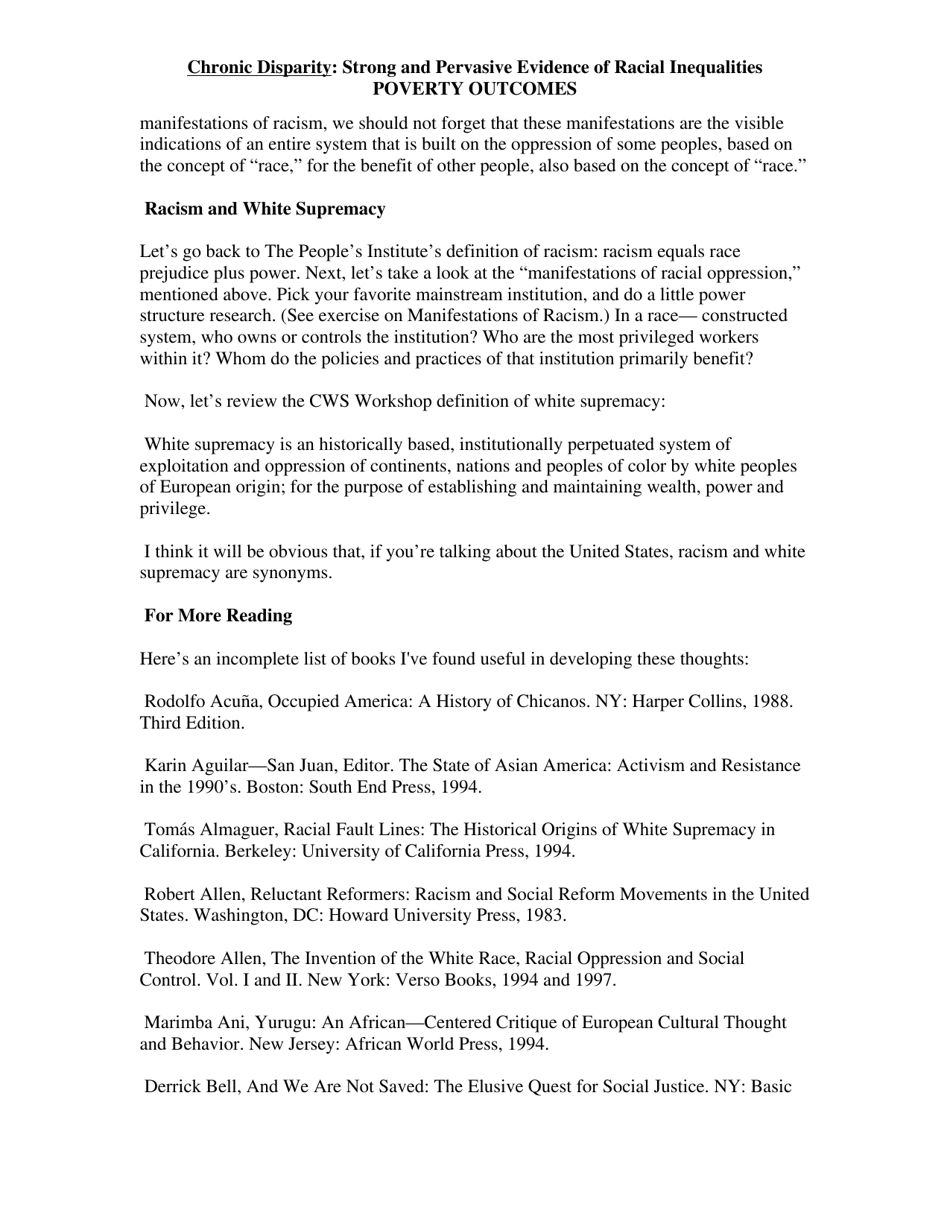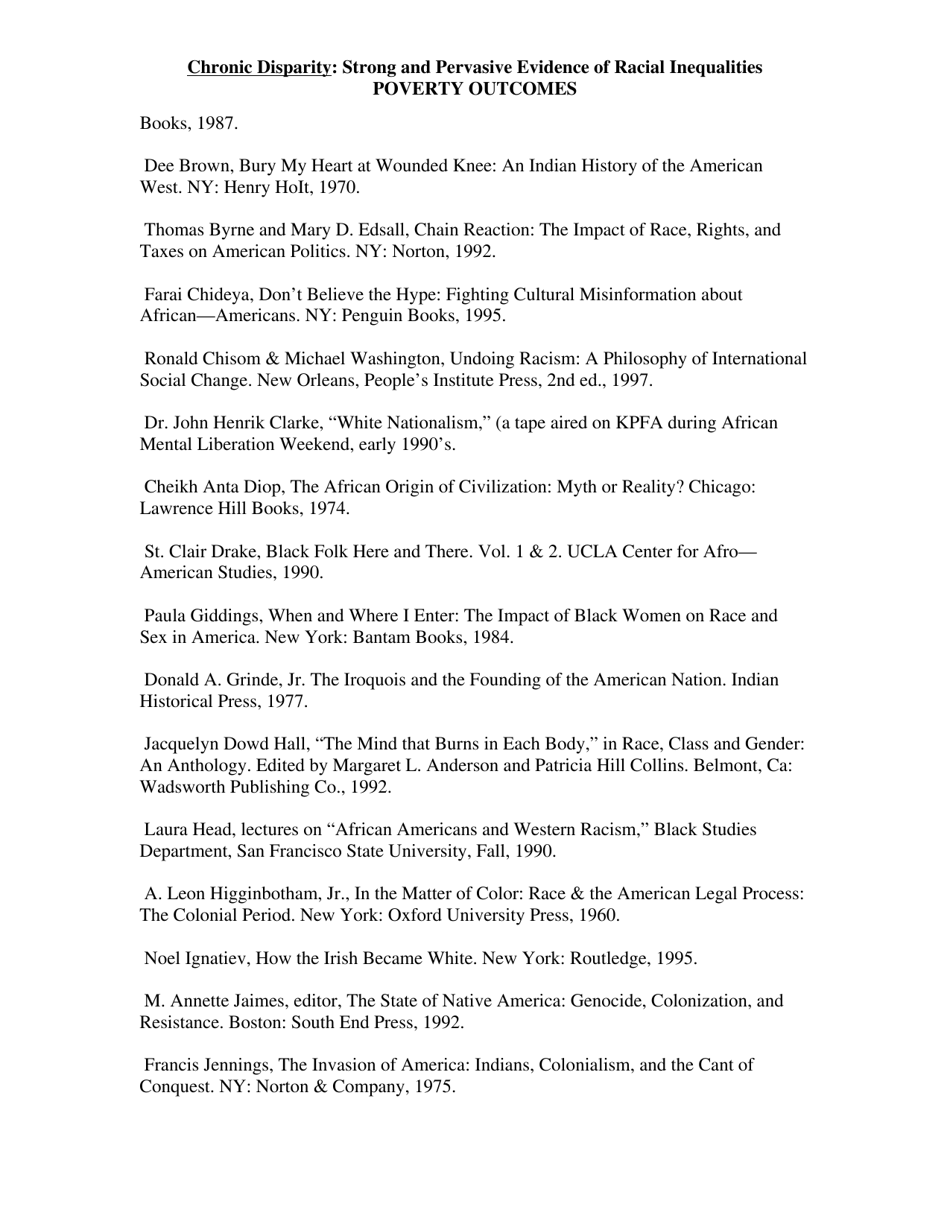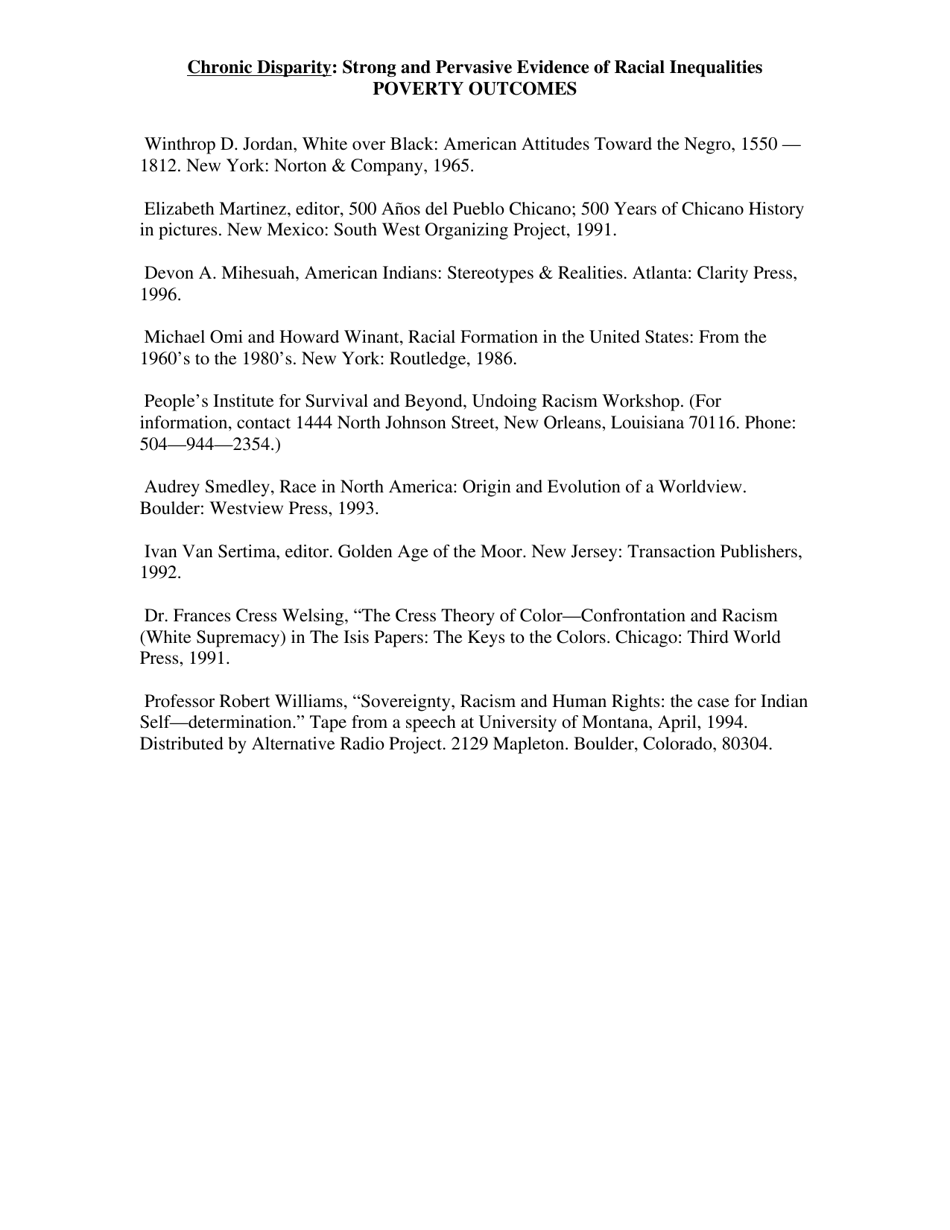Structural Racism - Keith Lawrence, Terry Keleher
Structural racism refers to the system and institutions within a society that perpetuate racial inequalities. It is when policies, practices, and norms in society systematically disadvantage certain racial or ethnic groups while benefiting others. This article by Keith Lawrence and Terry Keleher provides insight and analysis on the concept of structural racism.
Keith Lawrence and Terry Keleher are sociologists who have conducted research and written extensively about structural racism. However, it is important to note that structural racism is a complex issue that is influenced by various factors and is not solely attributed to any one individual or group.
FAQ
Q: What is structural racism?
A: Structural racism refers to the ways in which societal institutions and systems promote and perpetuate racial inequalities.
Q: How does structural racism affect people?
A: Structural racism disproportionately disadvantages racial and ethnic minority groups, resulting in limited opportunities and barriers to success.
Q: What are examples of structural racism?
A: Examples of structural racism include disparities in education, healthcare, housing, criminal justice, and employment.
Q: How can structural racism be addressed?
A: Addressing structural racism requires changing policies, practices, and systems, promoting equity, and ensuring fair opportunities for all.
Q: Is structural racism the same as individual racism?
A: No, structural racism is about systemic inequalities embedded in institutions, while individual racism refers to personal prejudices and discriminatory actions.
Q: How long has structural racism been present in society?
A: Structural racism has been present throughout history and continues to shape the experiences and opportunities of marginalized racial groups.
Q: Why is it important to address structural racism?
A: Addressing structural racism is essential for achieving equality, justice, and promoting a fair and inclusive society.
Q: What are the consequences of structural racism?
A: The consequences of structural racism include limited opportunities, increased poverty rates, higher incarceration rates, and poorer health outcomes for racial and ethnic minority groups.
Q: Can structural racism be eradicated?
A: While it is challenging, with concerted efforts and systemic changes, it is possible to reduce and eliminate the impact of structural racism.
Q: What can individuals do to address structural racism?
A: Individuals can educate themselves, challenge biases, promote inclusivity, advocate for policy changes, and support organizations working towards racial justice.
